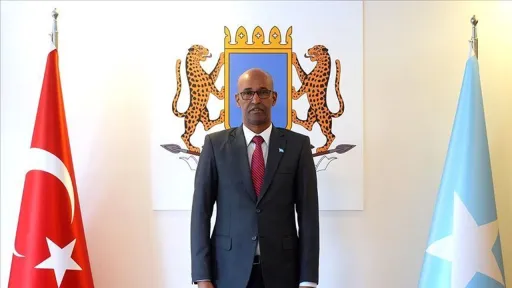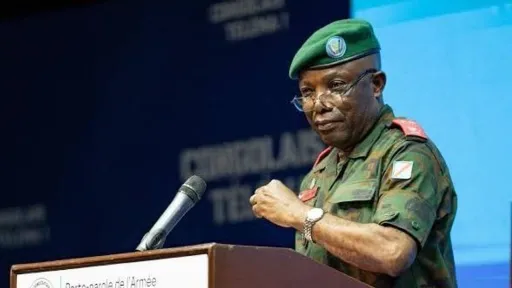By Sylvia Chebet
Money, they say, makes the world go round. But the journey from bartering to banknotes was circuitous, going through evolutionary sociopolitical and economic phases as diverse as the currencies in circulation.
While most of us woke up to a world with established monetary systems built around country-specific currencies, one African gentleman has an exciting story about his role in the origin and naming of his country's currency until its adoption as legal tender.
Former Eritrean ambassador Anderbrhan Welde Giorgis is a diplomat, politician and economist credited with overseeing the birth of the nakfa as the then governor of the Bank of Eritrea.
He traces the beginning to one evening in 1994 when he and President Isaias Afwerki hosted a World Bank delegation headed by Peter Miovich at an informal dinner in an Asmara restaurant.
Eritrea had just come out of a 30-year-long struggle for liberation from its neighbour Ethiopia and was planning to replace the Ethiopian birr with its currency. The governor, the President and their guests from the World Bank got into a currency debate over dinner.
Potential names for the proposed new currency were floating around during the conversation when Miovich told the hosts, "Look, you guys have done a fantastic thing. Nobody expected you to win, but you demonstrated your ability to defy international expectations."
Giorgis recounts to TRT Afrika exactly what Miovich suggested next. "So, why don't you call it nakfa?" he said. "It would symbolise steadfastness, determination and the resilience of the Eritrean people in the liberation struggle."
Nakfa derives its identity from the Eritrean town of the same name in the Northern Red Sea region that served as the headquarters of the Eritrean People's Liberation Front.
Gaining currency
The nakfa is among a handful of African currencies named after places. Omer Yalcinkaya, vice president of the International Bank Note Society, has put up a study titled "Origins of World Currency Names" on the organisation's website that lists 215 currencies used in 250 countries.
His study notes that Sierra Leone's currency, leone, is derived from the country’s name, while the naira is an alteration of the word Nigeria.
Other currencies named after places include the Angolan kwanza, which takes its name from the Kwanza River. Lesotho's maloti is inspired by the mountain range of the same name in South Africa.
The South African rand gets its name from the Dutch word "Witwatersrand", which means "ridge of white waters". It is a region in the country's northeast with some of the world's largest gold mines.
Like the rand, the dollar comes from the German "Joachimsthal", referring to Joachim's Valley, a town in the Czech Republic where silver was once mined. Coins minted with silver from this mine reportedly became "joachimsthaler", later shortened to "thaler", and eventually morphed into the dollar.
Several countries worldwide have their versions of the dollar, including the US, Australia, Canada, Fiji, New Zealand and Singapore. In Africa, three countries – Namibia, Liberia and Zimbabwe — have dollar denominations.
At one point, Zimbabwe even printed a Z$ 100 trillion banknote due to hyperinflation.
Reference to weight
Yalcinkaya observed one general trend in his research: "The first currency names were derived from weight units."
The British sterling pound, the Turkish lira, the Arabic dirham, the Russian rouble, the Greek drachma, and the Spanish peseta were all related to weight.
Egypt, Sudan and South Sudan have their versions of the pound. Ghana replaced the pound with the Ghanaian cedi ("small shell" in the native Akan). So did the Gambian dalasi. The Seychelles and Mauritian rupee were introduced after a wave of Indian migration, replacing the pound.
Some former British colonies introduced the shilling, derived from an old English verb "Scilling", which means "to divide". The accounting term that meant a 20th of a pound is now used in most of East Africa.
Francophone origins
In most French-speaking erstwhile colonies, the franc — originally denoting a French coin — became the standard unit.
The CFA Franc is used by eight West African states — Benin, Burkina Faso, Côte d'Ivoire, Guinea-Bissau, Mali, Niger, Senegal and Togo — and the six Central African countries of Cameroon, Central African Republic, Chad, DRC, Equatorial Guinea and Gabon. Mauritania also adopted the currency in 1973.
The franc entered Rwanda in 1916, when Belgium captured German territory. Rwanda utilised the Congolese Franc until 1960 when the Burundi and Rwanda franc was introduced. The franc was introduced to Djibouti in 1884 after it became a French protectorate.
Madagascar replaced the Malagasy franc with the ariary, while Mauritania replaced the CFA Franc with the ouguiya. The name ariary is said to have been derived from the pre-colonial currency, a silver dollar.
Cast in silver
Morocco also switched from the franc to the dirham, which derives its name from the drachma, the Greek coin used in Arabia during the pre-Islamic era.
Its neighbour Algeria then replaced the franc with the dinar, joining a list of at least ten other countries, including Libya, Iraq, Jordan, and Tunisia. Dinar is derived from the Latin word "denarius", a silver coin of ancient Rome.
Similarly, the birr also means silver. It was introduced in Ethiopia in 1893 but became the official currency only in 1976.
Symbol of freedom
While colonial powers influenced most of the continent's currency names, some were a statement of liberation, just like the nakfa.
Zambia's kwacha comes from the Bemba word for "dawn", reflecting the Zambian national motto, "New Dawn of Freedom." Malawi also adopted the kwacha as its official currency.
One of the most original currency names, according to Yalcinkaya, is the Botswana pula. It means rain in Setswana, a local language.
While most currencies seem to be historical symbols, the kingdom of Eswatini opted to call theirs lilangeni, which means "money" in native Swati.
➤Click here to follow our WhatsApp channel for more stories.
























